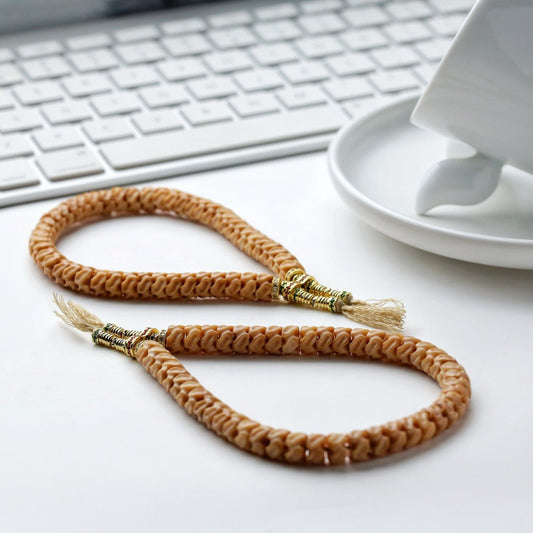
Amid the detailed mesh amidst Tibetan religious beliefs lie two compelling artifacts: the elaborated thangka and crafted bodhi seed. Individually, in particular fashion, offer access to elevated consciousness. The thangka, a hand-painted tableau, delineates sacred characters, spiritual mandalas, or traditional chronicles, assisting meditative practice.
On the other hand, the bodhi bead, often crafted from semiprecious minerals, grain, pods, or skeletal fragments, is a tangible reminder of Buddha's realization under the bodhi tree. Grasping the beads in sacred rituals aids mindfulness cultivation.
- Collectively, the thangka and the bodhi bead manifest the synergy between expression and belief. They offer a tangible link to the traditional insight of Tibetan Buddhism.
Legends Echoed from Camel Remains
Across distant millennia, age-old treasures whisper tales involving a world long passed. These are not treasured objects originating in suppressed empires, but elementary camel bones incised with characters that safeguard the enigmas of a bygone age. Each relic contains the echo of a life lived, a journey pursued, and a connection to the ancestral wisdom within which embraces us all.
- They
- Elements
- Provide
Interpreting the Visual Narratives of Thangka
Tangkas are eye-catching paintings on canvas, meticulously crafted by Tibetan artists to depict divine figures and scenes from Buddhist texts. Each detail within a thangka is laden with importance, forming a complex tapestry of visual narratives that guide the viewer on a philosophical journey. The tints used in thangkas are not merely aesthetic choices but carry deeper connotations, indicating different aspects of the Buddhist philosophy. From the stoic figures to the intricate layouts, thangkas offer a outlook into the rich world of Tibetan Buddhism, inviting us to meditate upon its principles.
- Conventional thangka art often depicts key Buddhist figures such as Buddha Shakyamuni, Bodhisattvas like Avalokiteshvara and Manjushri, and enlightened beings from various orders of Tibetan Buddhism.
- Within these representations lies a wealth of learnedness that can be decoded by those who engage the symbolic language of thangkas.
Awakened One's Path to Enlightenment: Embodied in Beads and Bone
Upon the winding trail to awakening, the Buddha utilized signs imbued with profound value. These bead and component held within them the core of his philosophy, revealing glimpses into the form of reality. Alongside their form, the Buddha expressed profound discoveries that surpass the realm of physical perception.
From such contemplative beads, crafted from unique materials, radiated vibrations that corresponded with the intense vibes within. The remains of a creature, meticulously transformed into symbols, served as tangible tokens of the impermanence intrinsic to all manifestations.
Thangkas: Windows into Himalayan Spirituality
Thangkas vivid paintings on cloth serve as impactful representations of Himalayan spirituality. These intricate works of art, meticulously created with refined brushstrokes, depict a vast array consisting of Buddhist deities, mandalas, and scenes from venerable scriptures. Each thangka is an enlightening window for meditation and contemplation, offering wisdom into the nuanced teachings of Buddhism.
- They are often used in ritual ceremonies to facilitate
- transcending states of spiritual realization.
- Thangkas function as not merely decorative works but rather gateways into the rich and mesmerizing world of Himalayan spiritual traditions.
The Allure of Bodhi Beads: Exploring Mindfulness and Compassion
Each jewel on a bodhi bead mala whispers tales of ancient wisdom, guiding us on a pilgrimage through the tranquil waters of mindfulness. As we grasp these intricately made beads, our fingers trace the contours of distinct one, anchoring our attention in the present moment. The gentle feel of the beads against our palms serves as a tangible reminder to draw breath, fostering a sense of serenity.
- At each bead that passes between our fingers, we foster compassion, extending it first to ourselves and then outward to the world.
- Ancient traditions teaches us that mindfulness is a ability that requires patience and steadfastness.
By means of the rhythmic repetition of mantra or simply the mindful counting of the beads, we unshackle from the relentless chatter of the mind.
The practice employing bodhi beads is a delicate invitation to renew our connection with ourselves and the world around us.
Intentional Craftsmanship: Making Camel Bone Bracelets for Inner Evolution
Will serves as a dynamic impulse in our lives, shaping our experiences and guiding us towards our sacred journey. When we combine this intention with the traditional practices of crafting a camel bone bracelet, we create a potent synergy that can enhance our spiritual growth.Camel bone remains deeply resonant, representing fortitude. Its natural beauty and perennial fascination serve as a constant reminder of the elemental strength within each of us.Once bones are chosen with care, flow affirmations into the bracelet. With every knot or fastening, we insert our hopes, dreams, and aspirations for spiritual evolution. This act of creation becomes a mindful activity, merging us with our inner wisdom and guiding us on a expedition of realization.- Use the bone’s natural designs to enhance symbolic resonance.
- Imagine your dreams threading through each crafted segment.
- Charge the completed bracelet under the moonlight or sunlight to amplify its energetic properties.
The Enduring Impact of Camel Bone in Buddhism
In the rich tapestry amidst Buddhist tradition, artifacts often hold profound symbolic meaning. Throughout these varied objects, camel bone stands out as a unusual and riveting element. Throughout history, this material has been applied in the crafting across various Buddhist artifacts, each imbued with specific denotations.
- Considered as a symbol of resilience and strength due to the camel's ability to persist in harsh environments, camel bone often represents spiritual fortitude.
- Likewise, the color and texture with camel bone are believed at some to hold auspicious connotations, representing purity and serenity.
Accordingly, camel bone has become a cherished part of Buddhist lineage, serving as a tangible relation to the profound teachings within this ancient faith.
Thangka Paintings: A Tapestry of Divine Stories
Within the ethereal realm of Tibetan Buddhism, Thangka paintings emerge as sacred portals to enlightenment. These exceptional works, meticulously crafted by skilled artists known as thangkapa, depict a myriad in an array of vibrant deities, celestial beings, and mythical creatures. Each brushstroke embodies profound spiritual significance, narrating ancient tales and philosophical ideas.
- Including a vast anthology of Buddhist iconography, Thangkas serve as both devotional objects and instructional tools. Dedicated practitioners gaze upon these paintings during rituals and meditations, seeking to acquire spiritual wisdom.
- Beautifully adorned with intricate details alongside a multitude of vibrant hues, Thangkas are considered windows into the divine. Every single painting acts as a symbolic representation of the Spiritual Leader's teachings and the path to liberation.
By the use of their potent imagery and symbolism, Thangka paintings offer a glimpse into the rich sacred traditions of Tibet. They are a testament to the enduring charm of Tibetan art and its profound ability to motivate.
Embracing the Duality: Thangkas and the Cycle of Life and Death
Thangkas, these vibrant woven scrolls from Tibet, offer a profound reflection on the transient nature of existence. Each intricate image depicts deities and beings engaged in the continuous journey of life and death, a assemblage of birth, growth, impermanence, and rebirth. The artists skillfully interlace these concepts within the thangka's territory, highlighting the harmony of all things. Through vivid representations, they invite us to contemplate on our own presence. The cycle persists, a motion of coming and going, emphasizing the preciousness of mala cleaning methods each moment. By embracing this duality, thangkas teach us to value the beauty in both life's joys and sorrows.Bonds of Serenity: The Significance of Bracelets in Buddhist Practice
In the intricate tapestry of Buddhist practice, seemingly straightforward objects often hold profound meaning. Among these are bracelets, which serve as tangible emblems of devotion and commitment to the principle of Buddha. Worn on the wrist, a bracelet exists as a constant reminder of one's aspirations and intentions. It can suggest the impermanence of life, fostering practitioners to remain grounded in the present moment. Some bracelets may contain sacred signs, such as mantras or the names of Buddhas, which are acknowledged to attract positive energy and well-being. Others might be made from constituents with spiritual significance, like sandalwood or lotus seeds, enriching the bracelet's potency. Ultimately, the significance of a Buddhist bracelet derives far beyond its physical form. It becomes a powerful tool for meditation, a reminder to live in harmony with the teachings of Buddha, and a manifestation of one's unwavering belief.